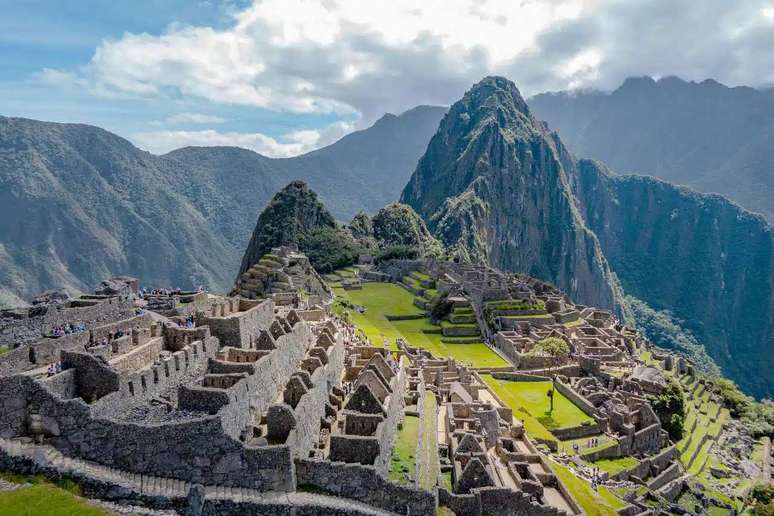-
Gypsy culture attracts curiosity and has peculiarities. Gypsies, also known as Roma, are a people with a rich and complex trajectory dating back to northern India. Discover this curious story.
Photo: William Adams from Pixabay / Flipar
-
Their westward migration is estimated to have begun around the 10th century, traveling through Persia, Asia Minor, and Europe.
Photo: public domain/Flip
-
Gypsies are known for their nomadic lifestyle, often living in itinerant communities and constantly traveling from place to place.
Photo: Goldwrite wikimedia commons / Flip
-
Over the centuries, the Gypsy people have faced persecution and discrimination, but they have also adapted and enriched the cultures of the countries they have visited.
Photo: UCLA Wikimedia Commons/Flip
-
Gypsy customs vary depending on the region and the specific group, but some elements are common in many communities. Discover now some of the most common habits in gypsy culture!
Photo: Danielle Rice Unsplash / Flipar
-
Family: The basis of Gypsy culture is the extended family, with a strong emphasis on blood ties and respect for elders. Important decisions are made together and the community supports each other.
Photo: Miray Bostancı pexels / Flipar
-
Language: The Romani language is an Indo-European language with several dialects. Although many Gypsies master the language of the country in which they live, the Romani language preserves their cultural identity.
Photo: public domain/Flip
-
Religion: Most gypsies did not follow a specific religion; They adhered to the beliefs of the place where they lived, that is, they could be Catholic, Orthodox, Evangelical, Spiritualist or even Muslim.
Photo: flickr Central University Libraries SMU / Flipar
-
In general, Gypsy people tend to have a set of beliefs and principles to follow, even if they do not worship the figure of a specific God.
Photo: Carl Albert Study and Research Center, Congress Collection wikimedia commons / Flipar
-
Music and dance: Music and dance are central elements of Gypsy culture. Vibrant rhythms and melodies are often accompanied by instruments such as guitar, accordion and tambourine.
Photo: flickr James Niland / Flipar
-
Gypsy dance is expressive and sensual, it transmits joy, emotion and freedom.
Photo: flickr K. Kendall / Flipar
-
Work: Traditionally gypsies engaged in itinerant activities such as trading, crafts, hardware and divination. Nowadays, many Roma also work in sectors such as music, art, education and healthcare.
Photo: advertising / Flip
-
Today, gypsies are widespread throughout the world, with estimates ranging between 10 and 20 million people.
Photo: advertising / Flip
-
The three countries with the largest Roma populations are: United States (about 1 million), Brazil (about 800 thousand) and Spain (about 710 thousand).
Photo: SecultBA / Cassi Coutinho / Flipar
-
In addition to these, Türkiye, Serbia, Romania, Bulgaria, France and Slovenia also have significant Roma populations.
Photo: Marcello Casal Jr / Agência Brasil / Flipar
-
The gypsies arrived in Brazil together with the Portuguese explorers. The Portuguese authorities saw the distant parts of the empire as an opportunity to get rid of these people who they felt were unwelcome.
Photo: mo eid pexels / Flip
-
Gypsies faced prejudice in Europe and this continued in the Americas as well. One of the reasons for this prejudice was the way they lived. While most people lived in the same place, gypsies moved from place to place.
Photo: cottonbro studio pexels / Flipar
-
They also had no written laws, which was common at that time. Although they accepted Christianity, they performed some acts that the Church did not like, such as trying to predict the future.
Photo: teksomolika freepik / Flip
-
During the rise of national monarchies in Europe, Gypsies were persecuted, as were other people who did not follow the Catholic faith, such as Jews and Muslims.
Photo: Caroline Hernandez Unsplash / Flipar
-
During World War II (1939-1945), Gypsies were persecuted and interned in concentration camps by the Nazis.
Photo: public domain/Flip
-
It is estimated that around 250,000 Roma were killed in this period, especially in Croatia, where almost the entire Roma population was exterminated.
Photo: Gunnar Herbert Lundh wikimedia commons / Flip
-
Gypsy culture was the theme of the Imperatriz Leopoldinense samba school at the Rio 2024 carnival. The inspiration for the plot came from Cigana Esmeralda, a character from the stories of Leandro Gomes de Barros.
Photo: globo tv playback / Flipar
-
In the first wing of the school, which is part of the Special Group of the Marquês de Sapucaí, dozens of real gypsies took part in the procession, including some women on stilts. The wing is called “Caravana em Festa”.
Photo: globo tv playback / Flipar
To share
Source: Terra
Ben Stock is a lifestyle journalist and author at Gossipify. He writes about topics such as health, wellness, travel, food and home decor. He provides practical advice and inspiration to improve well-being, keeps readers up to date with latest lifestyle news and trends, known for his engaging writing style, in-depth analysis and unique perspectives.







